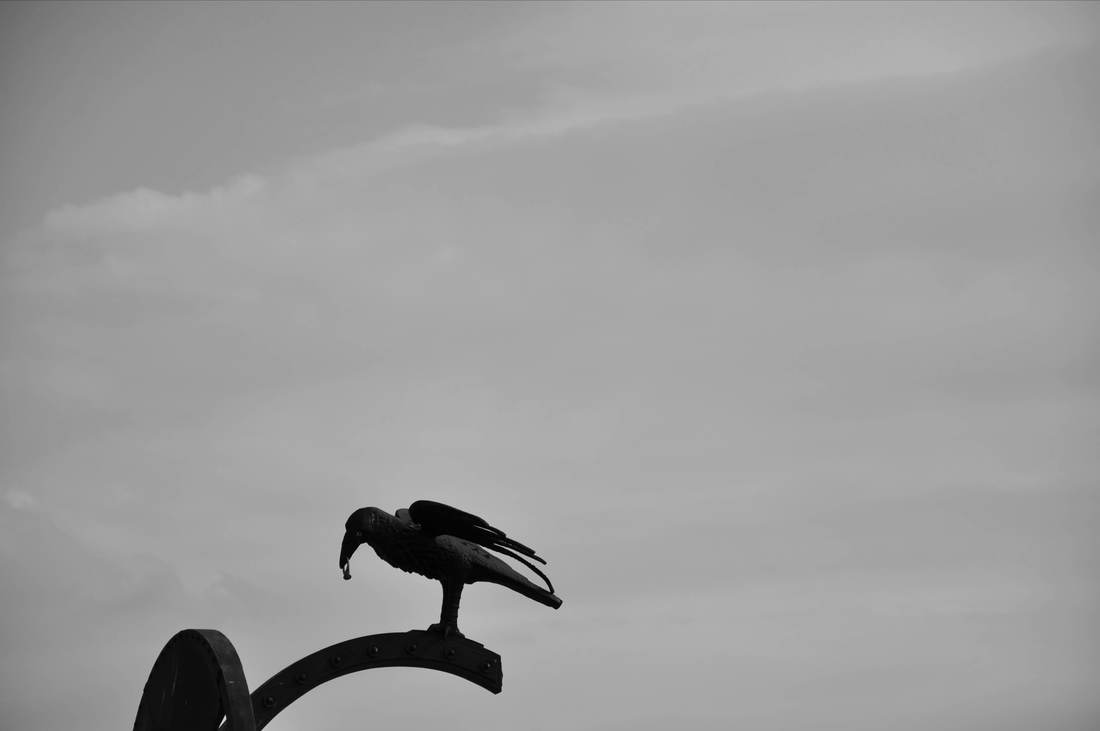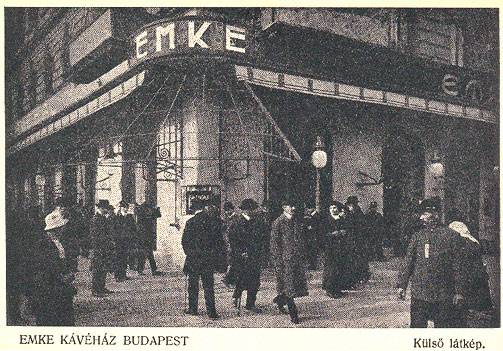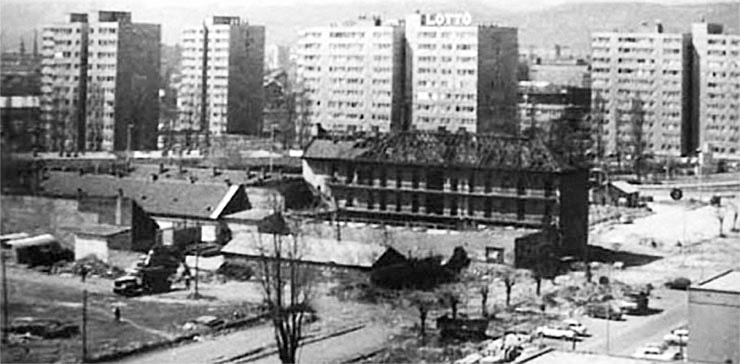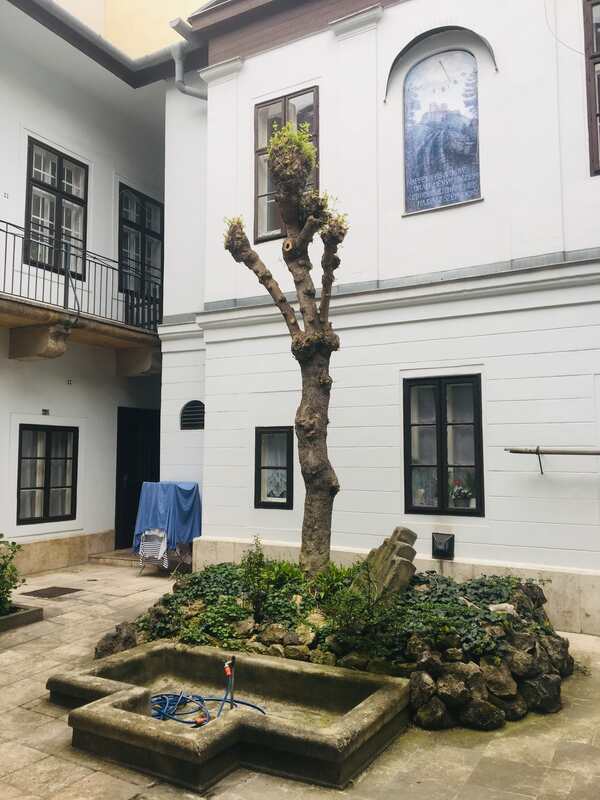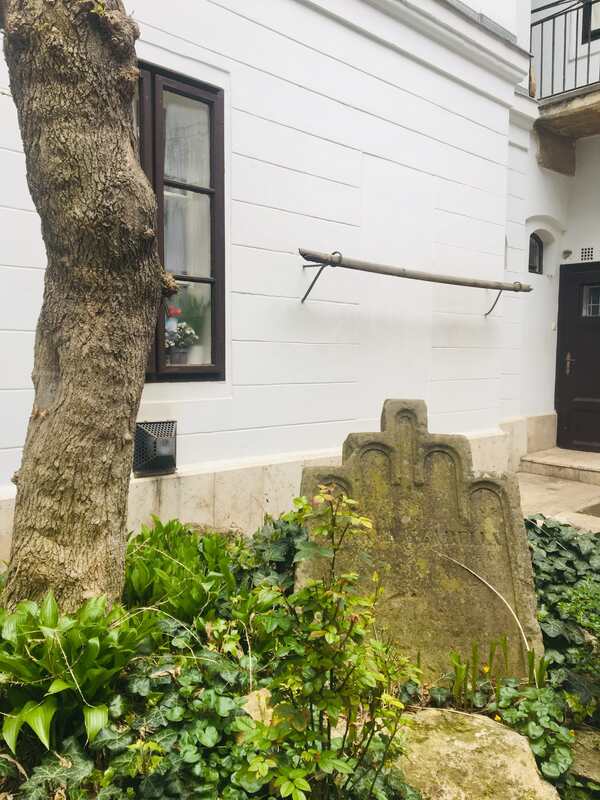|
18/4/2021
Ghost Stories of BudapestUrban Legends or Reality? Eerie tales and creepy events of the past for our autumn souls, Halloween - or a different kind of bedtime story. Handcuffed Skeletons At the beginning of the 20st century, every year on August 20th, at about 1pm the owners of an apartment in the Buda Castle quarter used to see two handcuffed skeletons coming down from the stairs very slowly and vanish through the ceiling of the "Elephant room". Many thought that this had something to do with the constructions of 1889 - the ceilings were unusually low and the collection of 12 stuffed elephant heads staring straight into your soul didn't help either. In 1943 - when the shelters were built underground, the cellars of the houses were connected with the caves. One day, a now dry fountain from the Turkish era (16th-17th c.) was found here - along with two skeletons, their hands tied together (surprise!). The pit above the fountain led straight above the ground floor, which happened to be above the Elephant Room. This was was basically the underfloor heating of the first floor which hasn't been in use since 1950. The family was obviously so freaked out by this revelation that they moved out asap. Strangers prayed for their souls at Matthias church - you get the idea how much everyone was taken aback by the revelations. Even though they could never find out who those skeletons really were, the ghosts haven't appeared ever since - and neither have the owners. The Suicide Capital of Europe After WWI and the financial crash, Budapest was nicknamed the Suicide Capital of Europe. Many were depressed, hopeless and tired, among them a former coffeehouse waiter named Gyula Antal. One night in March 1926, he entered Emke café on the corner of Rákóczi street and Erzsébet ringroad. He was well-dressed, wore fur, seemed to be a normal dude. He sat down at the corner table, ordered some wine, asked for paper, a pencil and a ruler and started drawing squares. Once he was finished he wrote something at the bottom of the paper. Then he asked for the key of the phone booth. He tried to make a phone call - without success. He tried again. Nothing. Again. And again. An hour or so had passed when the cloak room lady heard a bang from the toilet. Boom. Another one. Boom. She rushed inside immediately only to find him on the cold floor, blood flowing incessantly from his head and chest. An envelope titled "The reason of my suicide" along with a crossword puzzle were hidden in his pocket. It read: "If you solve the crossword puzzle, you'll know the exact reason for my suicide". The first crossword puzzle had only been introduced to Hungary slightly over a year before, so this counted as a weirdly creative way of leaving a message behind. Some said there was no need to reveal the truth because people have given up hope to solve the mysteries of life anyway and they prefered to solve their own "riddles" instead. The police took the crossword puzzle to its headquarters on the night of the tragedy and found out that the victim was 25 years old, lived in Pest, got evicted from his apartment and had been unemployed for quite a while before his death. What they didn't manage to find out was the exact reason behind his suicide. The crossword puzzle he created was never solved and never seen again. (Too bad because we were all dying to know the reason why..) Ghost Estate There is a haunted house in an industrial area of Budapest, trams and trains pass by in close proximity. (Seems like a great catch!) The first bad sign was that its construction didn't exactly go as smoothly as planned. Tools disappeared, invisible hands pushed workers towards the edge sometimes.. You could blame this on the booze, hell, even forgetfulness. But, get this, when the first residents moved in at the beginning of the 70s, even stranger things started to happen. Allegedly TVs and radios would switch on and off for no reason, the owners could hear steps and weird noises, creaking, screaming.. Countless sleepless nights had passed until they finally found out that the entire house was built on a former graveyard. Whoops. That maybe explained the paranormal activities.. around 80 small cemeteries were closed down and even though the remaining bones of the departed were supposedly all moved to a new place, some were left behind or came back to chase away the intruders from the place they had called home long before the others have arrived. Gloomy Sunday Gloomy Sunday is a killer song - literally. Also known as the Hungarian suicide song, it is believed that many people took their own lives while listening to it. It wasn't banned from radio stations in the USA, but it was in England - BBC only lifted the ban in 2002. Rezső Seress composed the music in 1933, at the time of the Great Depression. Maybe he was concerned about the world. Maybe he was feeling depressed, maybe both. The original lyrics were titled The world is ending - the song was about war. This probably sank into oblivion because his poet friend, László Jávor wrote the really melancholic version called Sad Sunday. In this one, the singer is heartbroken after a breakup, so much that he wants to die. Eventually, this became more popular. Although Gloomy Sunday was first recorded in English in 1936, Billie Holiday's 1941 version turned out to be the most well-known one in English speaking countries. Elvis Costello, Sarah McLachlan and Heather Nova have recorded it as well. Sam Lewis' lyrics referred to suicide: “Gloomy is Sunday, with shadows I spend it all My heart and I have decided to end it all Soon there'll be candles and prayers that are sad, I know Let them not weep, let them know that I’m glad to go Death is no dream, for in death I'm caressing you With the last breath of my soul I'll be blessing you.” In the 1930s at least 19 suicides were linked to the song - both in Hungary and the USA. There is no proven link between the tune and the suicides, but allegedly the music composer's ex took her own life to his music. In 1968, about 35 years after writing the song, the composer jumped out of an apartment building in Budapest.. but this time there might have only been a silent song playing in his head. Tombstones in the River There are many places in Budapest where graveyards stood once instead of the buildings and places we have come to know. In district 12 near MOM Park, at Gesztenyés garden and surroundings there used to be a cemetery called Németvölgy (aka German valley) which was closed down in 1912. Decades later, in the 1960s, the Communist government decided to use its tombstones to prevent erosion of the riverside. The fragments of marvel crosses, obelisques and tomb stones with Gothic inscriptions were tossed into the Danube by Petőfi bridge or built into the structure. More than 100 tombstones lie under water, but very few of them are visible and only when the water is extremely low. RIP whoever you may have been. If you want to see more pics about the tombstones, check out this amazing Hungarian blog about islands on the Danube. We also have a few photos about creepy cemetery statues. A real grave inside a courtyard?
This discovery was a wild one, I didn't expect to stumble upon a tombstone AND a sun dial behind (usually) closed doors in the Castle quarter, but here we are. Thanks to Falanszter blog I found out that the Lenkey family (famous for their wine business in the Austrian-Hungarian Empire) bought this house in 1828. To keep it short, Emma Lenkey was married to Elek Peregriny who had been an active official in the 1848 Revolution, so they had to flee after it failed. Emma had 3 daughters.. and a lung disease that caused her death in the carriage on the way to the piece of land that was supposed to be their new home. She was only 26. Plot twist: her sister Izabella is buried here (1850), not Emma, but there wasn't any more info about her. By the way, being buried in public places or courtyards marked with gravestones is extremely rare in Budapest, the other tomb that is mentioned on the blog is a lawyer called Jakab Horváth (1738-1806), who was layed to rest in the City Park under the inscription FUIT (Latin for "was"). Not sure I could sleep at night knowing someone's literally been "asleep" for centuries outside my window but enough about me.. "What’s the deal with the sun dial?" one might ask. For starters, this is just a copy - the original sundial is actually located in the lobby of the mayor's office in district 1. To be more specific, Elek Peregriny's son-in-law, Béla Ney rebuilt the house in 1907 and 23 years later a painter related to his family painted a sundial with the Castle in Csejte, where Elisabeth Báthory (aka the Blood Countess) was imprisoned after her alleged tortures in 1610. It's not a reference to that though, but to the flight of Emma and Elek's family to the same town. The inscription says: "I recall the former days of our dear Csejth, in the hours of sunshine and serenity." Now the only question left to answer is where did that bust end up that’s shown on Falanszter blog’s entry and who is it? |
CategoriesAll Bars Baths And Pools Beach Bars Best Areas To Stay Bridges Budapest Info Cemetery District 8 Escape Games Fall Festivals Food Historical Sights Hungarian Inventions Indoor Activities Movies And Music Videos Museums Outdoor Activities Outdoor Bars Photo Locations Rainy Day Restaurants Rooftop Bars Ruin Bars Statues Street Art Urban Legends Valentine's Day AuthorB Side Tours |
